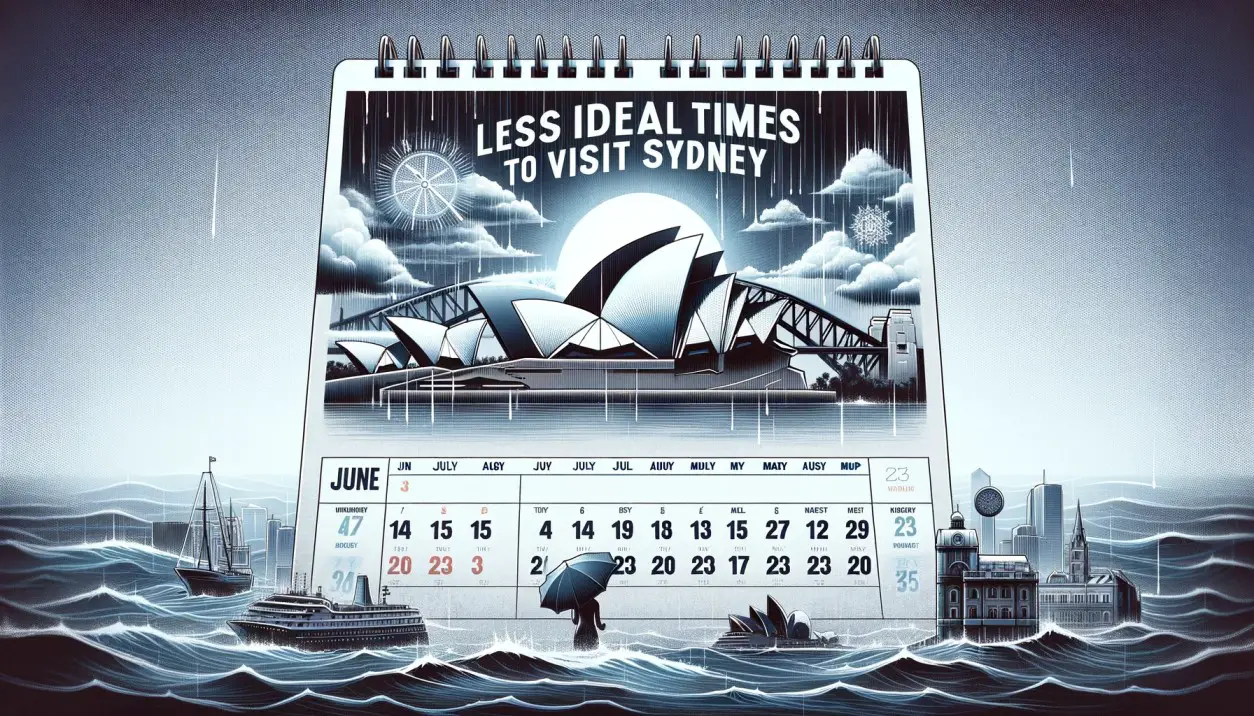Sydney, the vibrant heart of Australia, is renowned for its stunning beaches, iconic landmarks like the Sydney Opera House, and a bustling cosmopolitan atmosphere. While it’s a year-round destination, there are certain times when visiting Sydney might not provide the quintessential experience one might expect. This article explores those periods that could be considered the worst times to visit Sydney, based on various factors like weather, tourist crowds, and local events.
1. The Peak of Summer: January and February
While summer in Sydney (December to February) is a popular season for beachgoers and outdoor enthusiasts, the peak months of January and February can be challenging for several reasons:
- Extreme Heat and Humidity: Temperatures often soar above 30°C (86°F), combined with high humidity, making it uncomfortable for those not accustomed to such conditions.
- Overcrowded Beaches: Iconic beaches like Bondi and Manly get extremely crowded, diminishing the serene beach experience.
- Higher Prices: Accommodation and flight prices tend to spike due to the high demand from tourists and domestic holidaymakers.
2. The Rainy Season: Late February to Early April
Sydney experiences its rainiest months from late February to early April. While it doesn’t rain continuously, the unpredictability can disrupt plans:
- Frequent Showers and Thunderstorms: These can lead to cancellation or rescheduling of outdoor activities and tours.
- Humidity and Mosquitoes: Increased humidity and standing water can lead to a rise in mosquito activity.
- Less Beach Time: Unpredictable weather can mean fewer sunny days for beach outings.
3. School Holiday Periods
Australia’s school holidays, particularly the long December-January summer break, see Sydney flooded with local tourists:
- Crowded Attractions: Major sights and attractions get very crowded, leading to long queues and a less enjoyable experience.
- Bookings Required: It’s essential to book popular restaurants and tours well in advance.
- Increased Local Traffic: Roads and public transport can be more congested than usual.
4. Public Holidays and Major Events
Sydney hosts several major events throughout the year. While these can be exciting, they might not be ideal for every traveler:
- New Year’s Eve and Australia Day: Massive crowds gather for celebrations, making the city extremely busy.
- Vivid Sydney: This spectacular festival of light, music, and ideas in May-June attracts huge numbers of visitors.
- Sporting Events: Large events like the Sydney to Hobart Yacht Race can lead to crowded venues and public spaces.
Conclusion
While these periods might be less ideal for visiting Sydney, they can still offer unique experiences if you’re prepared. It’s all about knowing what to expect and planning accordingly. If you prefer a quieter, more relaxed visit with mild weather, consider visiting during the shoulder seasons of spring (September to November) or autumn (March to May). These months typically feature more moderate temperatures, fewer tourists, and lower prices, making them great alternatives for experiencing all that Sydney has to offer.
More read When Not to Visit Melbourne

